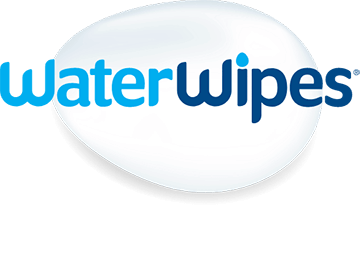What is the umbilical cord?
An umbilical cord is a truly amazing thing – a way for a mum to supply nutrients and oxygen to her baby as it grows in the womb. If you have chosen to cut the cord after birth, it’s important to know about umbilical cord care, how we look after your baby’s cord stump, and healing the umbilicus once it’s fallen off. Here I’ll share the advice that I give new parents about the best umbilical cord care.
When and why do doctors cut the umbilical cord?
The umbilical cord plays a vital role during pregnancy but once you have given birth your baby will start to adapt to life outside the womb and breathe independently. Once the cord has stopped pulsating your care provider will offer to cut the cord and clamp it. This leaves behind what’s known as a cord stump.1
When does the umbilical cord fall off?
The umbilical stump will darken and dry out and will typically fall off by itself within one to three weeks after a baby is born. Try not to hurry the process or handle the cord and instead let nature run its course.2
How do I care for the umbilical stump?2
I have three easy suggestions for parents when it comes to umbilical cord care:
Keep the stump clean and dry but avoid using alcohol or ointments unless you’ve been advised to by your healthcare provider. Air should do the trick!
Fold your baby’s diaper down in the front to avoid discomfort and give the stump proper exposure to air.
Do not pull the stump off yourself, pick at the area or try to pry it loose. If you notice any irritation, inflammation, or discharge – don’t clean it away, speak to your healthcare provider.
Can I give my baby a bath before the umbilical stump falls off?
It’s best to avoid fully immersing your baby in water until the cord has come off which will help to avoid disruption of the natural flora. If you would like to clean your baby within those first few weeks, here are a few simple tips:
It may be easier to carefully top and tail your baby as you can make sure you keep the stump area dry during the first few weeks of life.
You could use a soft sponge, a gentle wipe, or a wipe with minimal ingredients, like WaterWipes, as they have been proven to be purer than cloth and water.
If you notice any irritation or discharge around the cord area and umbilical stump, don’t clean this away – be sure to speak to your healthcare professional, as it could be a sign of infection.
Find out more information about how to batheyour newborn baby.
What might signal a problem when waiting for the stump to fall off?
Light bleeding after clamping shouldn’t be overly concerning but do not hesitate to tell a midwife or healthcare provider if you notice any discharge or more significant bleeding. Look for excess redness, an unpleasant smell, swelling, or a red lump close to the stump, which could be signs of an umbilical cord infection or a newborn granuloma, an overgrowth of tissue that results from the umbilical healing process. This is an especially important watch-out after the umbilical cord falls off.2
What do I do once the umbilical cord falls off?
When the umbilical cord falls off, the most important thing to do is simply, keep the belly button clean and dry to promote healing. To avoid rubbing and contamination of pee or poop, keep the area free of restrictive clothing and continue to fold the front of the diaper down. Again, you can use a gentle baby wipe or a wipe with minimal ingredients, like WaterWipes to cleanse your baby all over, but if you see any signs that the wound isn’t healing don’t clean this away, contact your baby’s healthcare provider.
What happens if the umbilical cord is not falling off?
Firstly, be patient. Every baby is different, and some umbilical cords may take longer to fall off than others. But, if the cord shows no signs of separating after three weeks, talk to your healthcare provider. A stump that is not falling off may be a sign of an underlying infection or immune system disorder.

